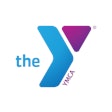The solution to the 14-percent penetration problem involves analyzing your facility's market.
There has been much discussion of late, in Fitness Management and other industry publications, about fitness center "penetration rates." It seems that the penetration rate of U.S. fitness centers is 14 percent of the population, and everyone would like to see that figure move higher. As the owner of an independent, small club business, much of the angst surrounding this issue is lost on me. Is it a big surprise that 86 percent of the population does not want to buy what we are selling? If that figure were only 84 percent or even 80 percent, would we all breathe a sigh of relief and think we've solved our problems?
The supply driven mentality
I have seen many arguments over the years that the fitness industry needs still more locations, to sell to more people and have more sophisticated sales processes. The argument seems to be that if we can get our product in front of enough people, and if we employ more sophisticated sales techniques, then surely our penetration rate would grow. In fact, in the second edition of the International Health, Racquet and Sportsclub Association's (IHRSA) Guide to the Health Club Industry for Lenders and Investors, there are statistics that clearly support the notion that more facilities will lead to more members. To quote page 47, "To a significant extent, the U.S. health club industry remains 'supply driven,' which is to say every new club creates its own coterie of new first-time club members. Currently, according to American Sports Data, 45 percent of all health club members are first-time members; i.e., the club to which they currently belong is the first and only club that they have ever joined. Hence, in the health club industry, the competitive issue is not solely one of dividing the pie into progressively smaller pieces. It is also a function of how successful the industry is in expanding the number of first-time health club members."Fitness centers are popping up everywhere, and you need to anticipate where the next one will be.
This supply driven mentality has been in full force for many years. According to IHRSA statistics, since 2000, the number of fitness centers has increased by 70 percent, while the number of members has increased by about 25 percent. If the increase in supply brings more demand, where did everybody go?




































